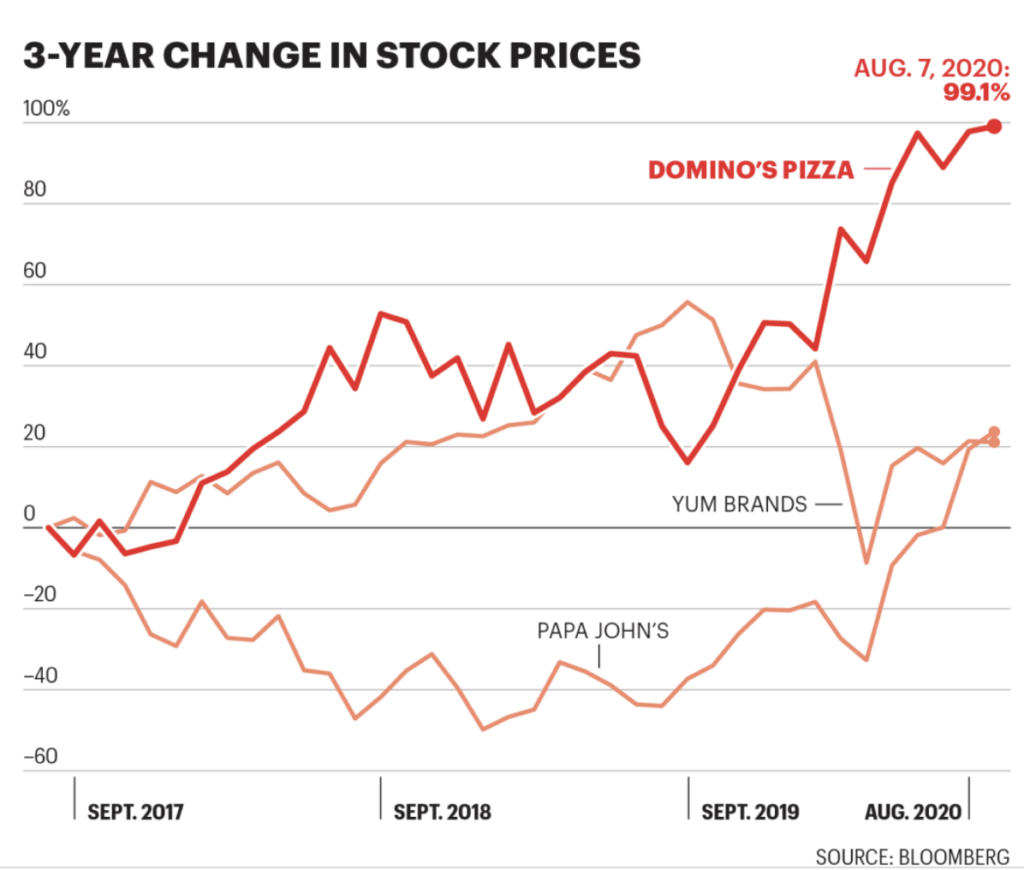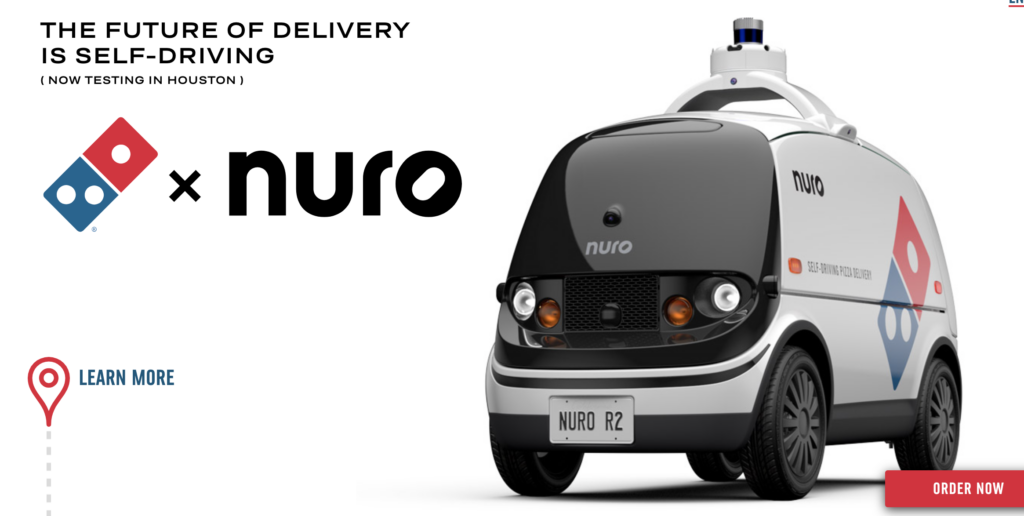The Secret Surveillance Sauce to Domino Pizza’s Success

How free pizza incentivized a “domino” effect.
In 2019, Domino’s ran a Super Bowl commercial that had hungry viewers intrigued:
As pizza-lovers rejoiced, Domino’s and its strategic partners, Nvidia and Dragontail Systems, hoped to couple AI and the campaign to tackle customers’ vexing complaints [1].
Using a deep learning neural network that classified pizza images, a model was built on an NVIDIA DGX and trained using more than 5,000 images of pizzas. Automation helped label the unique dataset, and the system was even able to recognize unexpected images of plastic, dog toy pizzas [2].
Two years later, the DOM Pizza Checker was born.
Source: https://dompizzachecker.dominos.com.au/
The camera captures the image of pizzas placed on the cutting bench and analyses the pizza to make sure it meets Domino’s quality standards. If it does, the system matches the pizza to the appropriate order, displaying it on the screen with a corresponding quality score. If the pizza has an issue, the checker will alert the manager with a visual pop-up and a sound and display the problem detected. The manager can then decide either to agree with the computer, in which case the system will automatically re-log the order, or override it, whereby the system will keep a log but move on to the next pizza. A thumbnail of the picture is then sent to Domino’s tracker, allowing customers to check their pizza, targeting a growing desire for transparency.
The system sends all logged inputs to Domino’s headquarters. This shared data allows the head office to check products sold under its brand name, score each store, determine how to allocate training resources effectively, and ultimately reduce the need for auditing.
The solution has also found unique value in its ability to quickly add additional features. For example, in response to the increased customer attention to health and safety during COVID, a cleanliness-checking feature was added to the camera ensuring the cutting bench was cleaned as often as the company’s standards require.
Domino’s claims to have witnessed a 14% to 15% improvement in product quality in stores that installed the AI tool. While the cameras’ adoption was not entirely smooth and skepticism of the technology causing initial doubts in some franchises, the overall project was received quite well and franchisees also added that it created a climate of positive competition, motivating employees to improve the quality of their pizzas [3].
AI: The New Hot Topping
In 2020, Domino’s AI success pushed them to make a substantial investment in migrating from CPUs to GPUs in order to improve the accuracy rate of predicting when a customer’s pizza would be ready.
With CPUs, it took three days for Domino’s to train an algorithm to predict when orders would be ready. Using GPUs, the company was able to train the same algorithm in less than an hour (and continuously retrains it using more data every day). These enhanced algorithms improved delivery time accuracy from the previous 75% to 95% accuracy rate by leveraging a load-time model that factors in labor variables such as how many managers and employees are working, the number and complexity of orders in the pipeline, operational factors, and even current traffic conditions to improve the order-ready accuracy rate [4][5].
And while these technology advancements meant adding significant infrastructure, personnel and R&D investments, the strategy proves to be paying off with Domino’s recognized as the number one pizza retailer in the world (by revenue) year-over-year [6].

Along with its financial success, the company ranked above the average limited service restaurant’s ACSI score of 78 in 2020 [7], and analysts say that Domino’s was uniquely positioned to meet consumers’ increased demand thanks to its commitment to innovation over the past several years [8].

Source: https://fortune.com/2020/08/12/coronavirus-food-trends-takeout-delivery-pizza-dominos-covid/
Looking Ahead
Domino’s recently announced its partnership with AI company Datatron to automate, standardize and streamline the deployment, monitoring, management, governance and validation of all of its disparate AI models. It hopes to bolster in-store operations, generate revenue and improve the customer experience by using tools such as forecasting labor, streamlining delivery vehicle routes for efficiency, and better identifying real estate locations for new stores [9].
Additionally, the company has struck a partnership with Nuro to deploy self-driving delivery vehicles (currently testing in Houston). They have also partnered with Flirtey, a drone delivery service, to test out a drone delivery program [10]. With the company doubling down on ML, AI, and data management, Domino’s is proving it is still hungry to be better.
Source: https://selfdrivingdelivery.dominos.com/en

Sources:
[1]. https://dompizzachecker.dominos.com.au/
[3] (https://www.verdictfoodservice.com/comment/ai-dominos-pizza-thematic/
[4] https://www.pizzamarketplace.com/articles/what-all-pizza-operators-can-learn-from-dominos-use-of-ai/
[6] https://www.statista.com/statistics/261888/ranking-of-pizza-chains-based-on-us-sales/
[7] https://www.statista.com/statistics/207133/revenue-of-dominos-pizza/
[8] https://www.franchisechatter.com/2017/10/15/the-25-best-pizza-franchises-of-20172018/
[10] https://www.pmq.com/why-the-pizza-industry-is-driving-innovation



Thank you so much for sharing, Heili! Adopting AI strategies for business, it is not just beneficial to the company not the customers mostly. Domino’s is undoubtedly empathizing with customer and providing what’s best for them. Taking Papa John’s as a compared sample, the delivery checker they use is literally a picture. For Domino’s, they have crossed a big step on using AI to improve their business on several aspects, I wonder how they plan to connect this AI with the labor distribution in the future?
A great question, Serrino, and one I would love to ask the class (i.e. how will this play out for us in the U.S.l when we think about the “future” of work?). We’ve seen a lot of companies try their hand at automating workplace tasks but it seems that the proliferation of robotics, automation and AI is picking up speed, and countries such as China serve as a prescient example.
Very cool post! Thanks for sharing. I had no idea Dominos was using AI and data in this manner but it makes sense. I can certainly recall the countless times we’ve had to return a pizza or log a complaint because something was off. Kudos to them for partnering with the right AI group to make this happen!
The marketing campaign definitely made me hungry for a Sunday evening pizza order. In connection with some of our classes, how does the scanning of pizza toppings strike a balance with workplace surveillance? I’m assuming the Dominoes is using the tool to identify stores with poor performance and customer outcomes. Is this technology incorporated into an employee or stores evaluation process? Also thinking about how this tool could be incorporated into developing medicine. This is super interesting stuff. Thanks for sharing 🙂
This is a great question with regards to surveillance. I know the adoption of the AI was not 100% embraced right away in the stores and I wonder if Domino’s is opting for AI surveillance with the anticipation of replacing the human workforce in the future. Curious for you to expand your thoughts regarding the medical piece in class if you are willing to chat about it!
Great piece, HeilI! Thanks for sharing!
I’m very interested in how the self-driving car will play out, given it’s sole purpose of delivering pizza. Since Nuro won’t be carrying any humans, I wonder how different it is to design the vehicle? I bet it’s probably easier, and I suspect we might be seeing Nuro pretty soon!
I appreciate Stephen’s comment above about workplace surveillance. What do managers do when there is a pattern of incorrect pizzas? How do they address that, besides redoing the pizza?
Thanks for the great read, Heili!
I was thinking the same thing re the design of the vehicle! It is already being used in Houston and I wonder what types of regulations it had to comply with given that it interacts with humans but does not transport one. I found out they have an innovation lab called the “innovation garage” where they have been testing their own autonomous vehicle for a while in order to reap vertical integrations (versus third-party options such as Uber Eats). Thanks for the questions!